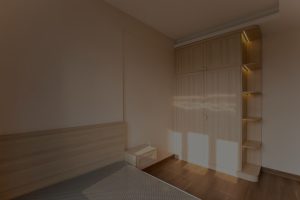**Abstract:**
Unlock the secrets of Feng Shui with practical tips tailored for Western homes. Discover how to enhance your living space for harmony, balance, and positive energy.
Understanding the Essence of Feng Shui
Feng Shui, an ancient Chinese practice, revolves around the belief that our environment significantly impacts our well-being. It’s about creating harmony between individuals and their surroundings. For beginners in Western homes, understanding Feng Shui principles can be a transformative journey. By aligning your space with these principles, you can invite positive energy, reduce stress, and enhance your overall quality of life.
Key Principles of Feng Shui for Beginners
The foundational principles of Feng Shui include the concepts of Chi (energy flow), the five elements (wood, fire, earth, metal, water), and the Bagua map, which helps you analyze your space. Chi should flow freely throughout your home, promoting a sense of calm and balance. To achieve this, ensure pathways are clear, and avoid clutter that can stifle energy movement. The five elements should be represented in your decor to create a balanced atmosphere. For instance, incorporating plants (wood), candles (fire), and water features can significantly enhance the energy in your space.
Creating a Balanced Living Space
Begin by evaluating the layout of your home. The front door is considered the ‘mouth of Chi,’ where energy enters. Ensure it is welcoming and unobstructed. Arrange furniture to promote conversation and flow; avoid sharp corners that can create negative energy. Each room should serve a purpose, reflecting its intended use. For example, your bedroom should exude tranquility, promoting rest and relaxation. Use soft colors, natural materials, and calming artwork to create a serene environment.
Utilizing the Bagua Map Effectively
The Bagua map divides your home into nine sections, each corresponding to different aspects of life, such as wealth, health, and relationships. Overlay this map onto your home’s floor plan to identify areas needing attention. For instance, if your career section is cluttered, consider decluttering and adding elements that represent success, such as a small water feature or a vision board. This targeted approach allows you to focus on specific areas of your life that require enhancement.
Incorporating Feng Shui Colors and Elements
Colors play a vital role in Feng Shui, each evoking different emotions and energies. For example, greens promote growth and healing, while blues encourage calmness. Choose colors that resonate with your intentions for each space. Additionally, incorporating the five elements through decor items can enhance the energy flow. For instance, a wooden sculpture represents the wood element, while a metal lamp brings in the metal energy. This multi-faceted approach allows for a holistic transformation of your home.
Embracing Natural Light and Airflow
Natural light and airflow are essential components of Feng Shui. They bring in fresh energy and vitality. Open curtains and blinds during the day to let sunlight flood your space. Ensure windows can be opened to allow for proper ventilation. If your home feels dark or stuffy, consider adding mirrors to reflect light and create an illusion of space. This not only brightens your environment but also uplifts your mood.
Final Thoughts on Feng Shui for Western Homes
Understanding Feng Shui is a journey that goes beyond mere decoration; it’s about creating a nurturing environment that supports your goals and well-being. By implementing these practical tips, you can cultivate a space that resonates with positive energy, fostering harmony and balance in your life. Remember, Feng Shui is personal, so trust your instincts and make adjustments that feel right for you. Embrace the journey and watch as your home transforms into a sanctuary of peace and positivity.










